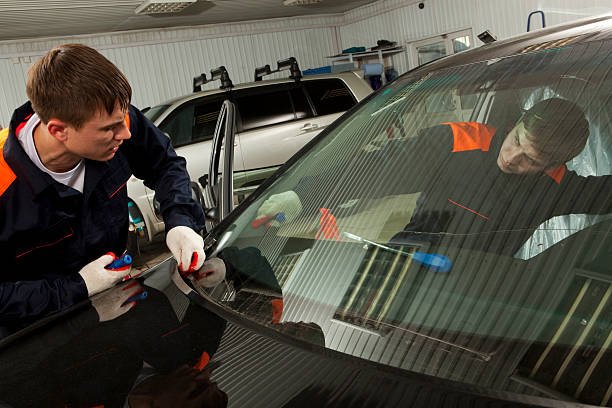
Newport Beach Express Auto Glass
Clear Views, Safe Journeys – Newport Beach's Premier Windshield Repair Experts!
Auto-glass damage is a common issue for vehicle owners. From tiny chips to large cracks, the types of damage your car's glass can sustain are varied. Understanding these different types is crucial for assessing the severity of the damage and determining the most appropriate repair or replacement action. In this blog, We will explore the various types of auto glass damage and provide insights into their causes, implications, and repair methods.
Chips are small damages typically caused by the impact of debris, like stones, on the windshield or other auto glass parts. They usually appear as a small pit on the glass surface. The most common types of chips include:
Bullseye: Circular and marked by a series of concentric circles.
Star Break: Short radial cracks emanating from the impact point, resembling a star.
Combination Break: A mixture of multiple types of breaks.
Cracks are lines on the glass that can vary in length. They can be:
Stress Cracks: These appear without an external impact, usually due to extreme temperature changes.
Edge Crack: Starting at the edge of the windshield and extending towards the center.
Floater Crack: A crack that starts in the middle of the glass.
The severity of auto glass damage depends on the size, type, and location of the damage. Small chips might seem insignificant but can quickly turn into large cracks if not addressed. Cracks, especially those near the edges of the windshield, can compromise the structural integrity of the glass, posing safety risks.
Deciding whether to repair or replace depends on the damage type and extent.
Suitable for: Small chips and cracks smaller than six inches.
Process: Involves injecting a resin into the chip or crack, then curing and polishing it.
Needed when: Damage is in the driver’s line of sight, larger than a dollar bill, or when there are multiple cracks.
Process: Removing the damaged glass and installing a new one.
Understanding the common causes can help in prevention:
Road Debris: Stones or objects hitting the glass while driving.
Accidents: Collisions or objects falling on the car.
Temperature Changes: Rapid temperature fluctuations cause stress in the glass. Learn more about how to handle auto glass repair in bad weather.
Poor Installation: Incorrectly installed glass can be more prone to damage.
While not all damage can be prevented, some practices can reduce the risk:
Keep Distance: Maintain a safe distance from vehicles, especially on highways.
Avoid Rapid Temperature Changes: Don’t use boiling water to defrost your windshield.
Regular Inspections: Check for minor damages regularly to prevent them from worsening.
Quality Installation: Ensure professional installation and use of high-quality glass.
Most comprehensive car insurance policies cover auto glass repair and replacement. However, it's essential to understand the terms of your policy:
Deductibles: Some policies have deductibles that may exceed the cost of repair.
Repair vs. Replacement: Insurance may prefer repairs over replacement to minimize costs.
Choice of Service Provider: Some insurers have preferred providers or may allow you to choose.
While DIY kits are available, professional repair is usually recommended:
DIY: Can be cost-effective for very small chips.
Professional Repair: Ensures quality and safety, particularly for larger or more complex damage.
Advancements in technology have improved the repair process:
Resin Quality: Better resin materials that offer clearer and more durable repairs.
Tools and Techniques: Enhanced tools for more precise repair work.
Safety Features: With features like sensors and cameras integrated into windshields, professional calibration post-repair is crucial.

Auto glass repair is often more environmentally friendly than replacement due to:
Less Waste: Repairing prevents the old glass from ending up in landfills.
Energy Efficiency: Less energy is required in repair compared to producing a new glass.
Understanding the different types of auto glass damage is key to ensuring your vehicle's safety and longevity. Timely repairs not only save costs but also prevent the risk of more significant damage and ensure safety on the road. It's essential to assess each situation carefully, consider professional advice, and understand your insurance policy's coverage to make an informed decision about repair or replacement. To learn more about the Dangers of Driving with a Cracked Windshield, please check out our dedicated article.
100 Vilaggio #235 Newport Beach, CA 92660, United States
Monday to Sunday 7 AM to 9 PM